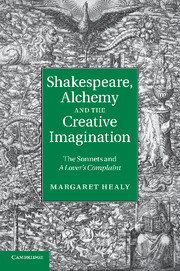Book contents
- Frontmatter
- Contents
- List of illustrations
- Acknowledgements
- A note on the texts
- Introduction
- 1 Alchemical contexts
- 2 Lovely boy
- 3 The dark mistress and the art of blackness
- 4 A Lovers Complaint by William Shake-speare
- 5 Inner looking, alchemy and the creative imagination
- 6 Conclusion: Shakespeare's poetics of love and religious toleration
- Notes
- Index
- References
Notes
Published online by Cambridge University Press: 18 December 2013
- Frontmatter
- Contents
- List of illustrations
- Acknowledgements
- A note on the texts
- Introduction
- 1 Alchemical contexts
- 2 Lovely boy
- 3 The dark mistress and the art of blackness
- 4 A Lovers Complaint by William Shake-speare
- 5 Inner looking, alchemy and the creative imagination
- 6 Conclusion: Shakespeare's poetics of love and religious toleration
- Notes
- Index
- References
- Type
- Chapter
- Information
- Shakespeare, Alchemy and the Creative ImaginationThe Sonnets and A Lover's Complaint, pp. 211 - 252Publisher: Cambridge University PressPrint publication year: 2011



